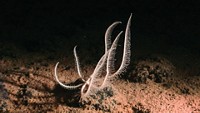Advertisement
Grab your lab coat. Let's get started
Welcome!
Welcome!
Create an account below to get 6 C&EN articles per month, receive newsletters and more - all free.
It seems this is your first time logging in online. Please enter the following information to continue.
As an ACS member you automatically get access to this site. All we need is few more details to create your reading experience.
Not you? Sign in with a different account.
Not you? Sign in with a different account.
ERROR 1
ERROR 1
ERROR 2
ERROR 2
ERROR 2
ERROR 2
ERROR 2
Password and Confirm password must match.
If you have an ACS member number, please enter it here so we can link this account to your membership. (optional)
ERROR 2
ACS values your privacy. By submitting your information, you are gaining access to C&EN and subscribing to our weekly newsletter. We use the information you provide to make your reading experience better, and we will never sell your data to third party members.
Environment
Plastic Pollution Is Forming Plastiglomerate, A New Type Of Stone
Fused plastic jumbles may become a marker for human activity
by Carmen Drahl
June 23, 2014
| A version of this story appeared in
Volume 92, Issue 25
Chemists have developed all kinds of plastics over the years. But that legacy might unintentionally end up in the geologic record, if a new type of stone sticks around as long as its discoverers think it could. The stone is called plastiglomerate. It forms when plastic waste, melted by a heat source such as a campfire, mingles with sediment, coral, shell fragments, and other debris. Geologist Patricia L. Corcoran of the University of Western Ontario found the new stone with help from Charles J. Moore, the oceanographer known for bringing attention to the Great Pacific Garbage Patch, an area of the Pacific Ocean awash in plastic trash. They canvassed a 700-meter swath of shoreline on Hawaii’s Kamilo Beach and found plastiglomerates everywhere they looked (GSA Today 2014, DOI: 10.1130/gsat-g198a.1). Corcoran thinks the plastic hodgepodges are likely to be found elsewhere and that they might persist if they’re buried. “My best guess is that incorporation of the plastics into rock will make them even more recalcitrant” to biodegradation than they already are, says Darrell Jay Grimes, a bioremediation expert at the University of Southern Mississippi.





Join the conversation
Contact the reporter
Submit a Letter to the Editor for publication
Engage with us on Twitter